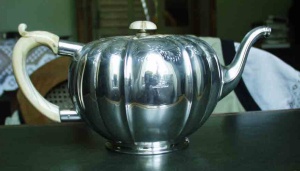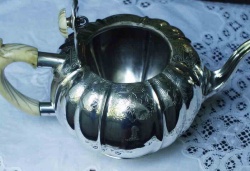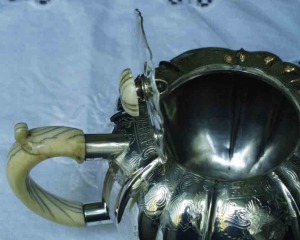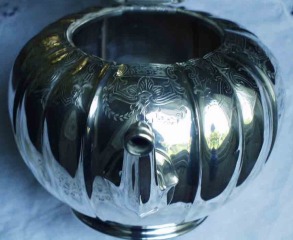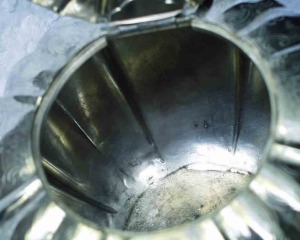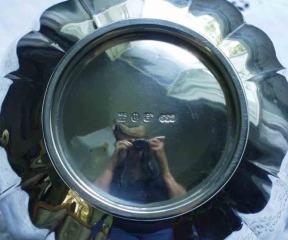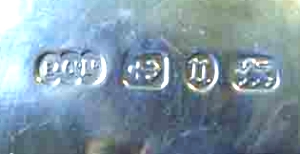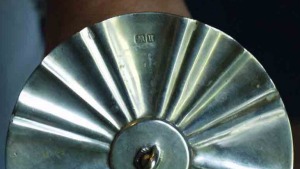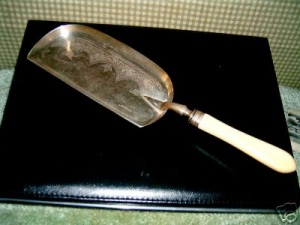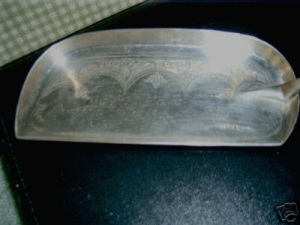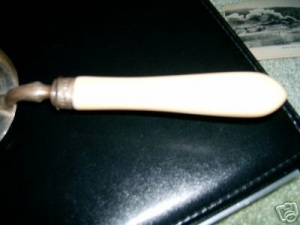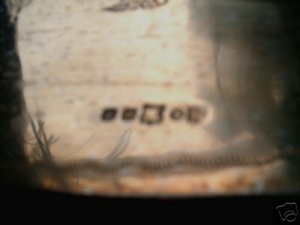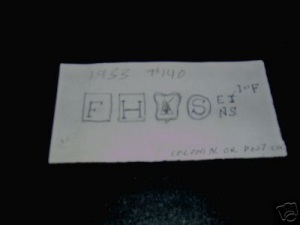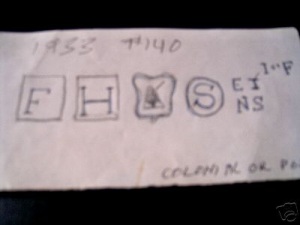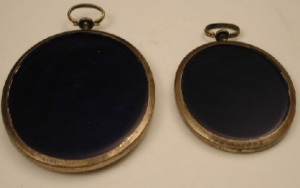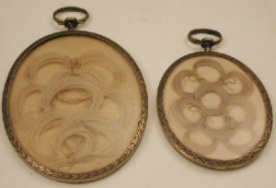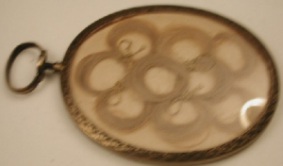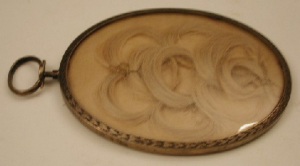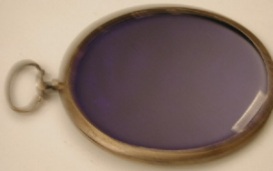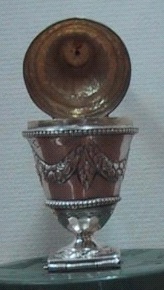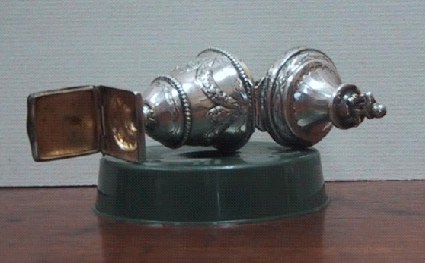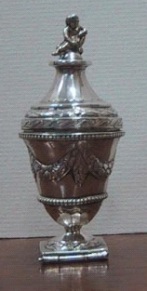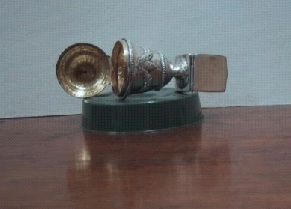Two new articles for ASCAS website
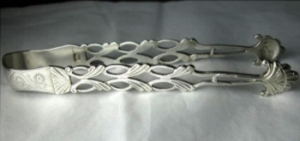
Graham Hodges presents:
Georgian Silver Sugar Tongs of the period 1770 to 1820,
A well documented article on English silver sugar tongs of a period
that saw the change from tea tongs, through cast sugar tongs, to the
standard style of this item.
click here |
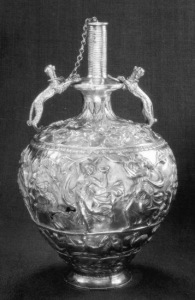
Giorgio Busetto presents:
Buried treasures - Tesori sepolti,
To bury the silver to prevent enemies' robberies is an ancient
practice, still surviving in recent times.
This articles deals with the finding of some of these unknown
treasures.
The article is available in double version
English
 /
Italiano>
/
Italiano>

|
New members
Welcome to new ASCAS members:
Nina Brunel - USA
Martine D'Haeseleer - Spain
Lillian Greenberg - USA
Nigel Haddow - England UK
Murray James - Canada
Diana McIlvaine - USA
Colin Morrison - England UK
Eleanor Pinault - USA
Martin Pye - England UK
Yvonne Riches - Australia
Bill Sehl - USA
Neale Talbot-Scobie - Australia
Iris Terral - USA
Fred E. Zweig - USA
Members' Window # 16
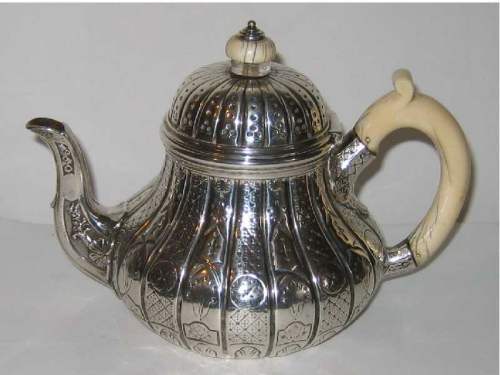
Giovanni Ciceri presents:
Three excellent Victorian teapots / Tre teiere di qualità di
Epoca Vittoriana
a well documented description of an engraved, a neo-gothic and an
Indian ethnic decorated teapot of the 19th century.
The article is available in double version
English
 /
Italiano
/
Italiano

|
Questions from ASCAS members
Genni Grassi
requests your help to decipher the marks of her Victorian teapot.
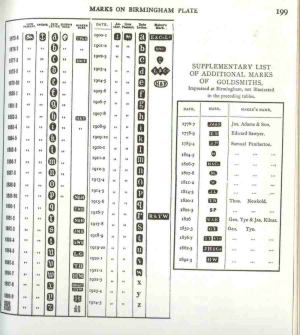 I believe that the date mark on the
body of the teapot looking to be
I believe that the date mark on the
body of the teapot looking to be
 is instead
is instead
 into a circle (upside down, corresponding to Birmingham 1887/88),
while the date letter on the cover is
into a circle (upside down, corresponding to Birmingham 1887/88),
while the date letter on the cover is
 into
a square (corresponding to 1894/95). into
a square (corresponding to 1894/95).
This wouldn't be surprising, signifying only that che cover was
manufactured some years later than the teapot.
But the 1887/88 hallmark is lacking of the 'duty mark' with
Victoria's head (whose use ceased in 1889/90).
I'm a bit confused and maybe something is wrong.
I hope that ASCAS members more acquainted with English silver will
clarify this apparent incoherence.
|
Randy Vanhoose writes:
I have this crumb butler. I have looked at hundreds and hundreds of
makers marks and touch marks in book after book. I cannot identify the
maker, town or purity. It remains however, very beautiful and highly
hand decorated with flowers and leaves. It is 12 1/2 inches long and 3
inches wide. The piece is very heavy.
The rat tail handle should be a hint of its age. There is a highly
decorated band between the handle and the rat tail. I have enclosed a
hand rendering of the marks for your viewing pleasure.
Would you be so kind as to take a peek at the piece and perhaps tell me
what the marks mean or maybe someone can identify them for me.
Forever in your debt.
Randy
Hymie Dinerstein writes:
I have bought a pair of unusual unmarked silver frames.
The larger one is 13.8 cms long from the top of the handle and 8.8 cms
accross. They are identical apart from the difference in size. The backs
are enamelled in deep blue and the fronts have hair arrangements. The
front of the frames have identical fine eighteenth century feather
engraving.
On the reverse below the larger silver frame is engraved in fine Script
'Acaric 1908' and on the smaller frame is engraved 'John 1908' I believe
these names and dates were put on in 1908 and the frames are late
eighteenth century.
I would appreciate anybody's help. Thanks
H Dinerstein
This isn't an easy task! Do someone have some suggestion?
What is this piece ???
Lillian Greenberg writes:
I have found two similar pieces on the web but I have not discovered
for what these urns were used. The top and bottom open. They are hinged.
The height is 3 5/8" (cm.9) and it is marked on the inside of the bottom
lid.
The mark is an impressed rectangle with unidentifiable (to me) item(s)
on the left but ends in o5, o3, or oS.
The piece is gilded on the inside. It is engraved around the upper
section below the figure HTD 1846. On the bottom is engraved HT? over
AC(?)D. All of the engraving is composed of small dots and written in a
simple script.
Thank you in advance for any information that can be provided.
Best regards, Lillian Greenberg
(click on images to enlarge)
The hinged bottom is unusual for me, but perhaps one of ASCAS members
would know the use of this object.
Giorgio Busetto
Replies to members' questions
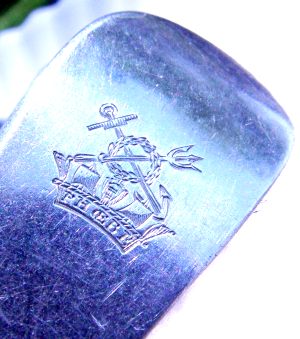 The Phoebe's spoons question of Jerry Hogan
(July Newsletter) have received these replies:
The Phoebe's spoons question of Jerry Hogan
(July Newsletter) have received these replies:
|
Rafe Nottage writes:
Those "Phoebe" markings are the Electro Plate markings for Harrison
Brothers & Howson
Marks used:- HH, HB&H
Trademark:- a five point crown
Originally known as Harrison Brothers (from 1849) this Sheffield
manufacturer took on Howson as a partner in 1862. The majority of
flatware produced by them was EPNS, however some silver items can be
found. They also produced good quality cased sets of carvers, fruit
eaters and fish eater/server sets. They still trade today.
Norma L. Young writes:
for Jerry Hogan's : spoons with a nautical "Phoebe" crest ?
- whomever tested these as sterling silver needs to learn better about
both plated marks and testing silver !
- marks are British or Commonwealth origin (ie Canada, Australia etc )
and not mid-19th century cutlery style, but late 19th century markings.
- a 'naval coronet' device does not mean a ship of British Royal Navy by
any means .... the late 19th century marks rule out any HMS Phoebe
(there are 3 or more by that name, including one launched circa 1939)
-most likely is SS Phoebe, built 1851, & by 1857 owned by Union Line
(later Union-Castle Mail Steamship Co) & used on Southampton to Cape
Town mail service to 1861. Then acquired by New Zealand Steam Shipping
Co. & by 1876 absorbed into Union S.S.Co of New Zealand . 1878 was sold
to Newcastle, NSW (Australia) owners. In 1901 she was hulked and was
scrapped in 1904.
- mail ships also carried paying passengers, so long-wearing plated
cutlery would be a necessity and even today's cruise ships employ heavy
plated flatware in all levels of dining rooms ( just travelled on Q.
Mary 2, as first class passengers, and our exclusive dining room had
plated flatware! )
- as each owner would have spent some money to refit a ship on purchase,
its very likely by 1876 or 1878 her new owners acquired new furnishings,
changed some decor, and laid on more cutlery from a UK or Commonwealth
supplier, hence seeing Phoebe pieces with late 19th century plated
marks.
- flatware from hotels and cruising ships does manage to get all around
the world to the most far-flung places, often 'liberated' as souvenirs
from a trip
I'm aware that Jerry was highly disappointed discovering that his
spoons are not sterling silver of 18th century, but I hope he will
renounce to his threat of ... throwing those three spoons out the
window of my moving truck, and into the desert....
They are, anyway, an interesting witness of 19th century navy.
Giorgio Busetto
---
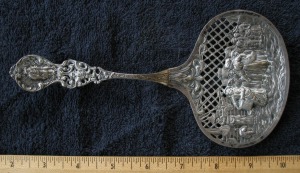 Janjaap Luijt replies to the question of John Imhoff
(July Newsletter) about his silver serving spoon:
Janjaap Luijt replies to the question of John Imhoff
(July Newsletter) about his silver serving spoon:
|
The object Richard Reinhart asked for information is a 20th century
Dutch fish server made for export to England and the States. The
decoration is a so-called Old-Dutch scene. In the decoration of the top
of the spoon one will probably find the maker's mark. The date letter B
is indeed that of 1911.
Met vriendelijke groet,
Janjaap Luijt
---
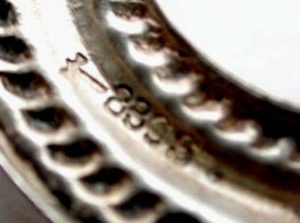 Sam Mitchell's question about the hallmark of his Danish jewel
(July Newsletter) has received this reply by Norma L. Young:
Sam Mitchell's question about the hallmark of his Danish jewel
(July Newsletter) has received this reply by Norma L. Young:
|
The Scandinavian brooch (Solje) has a 830S mark which indicates
modern manufacture, ie 20th century. These brooches were usually worn by
married ladies in Norway (and the 830S mark can be found in that
country) on their fancy regional Costumes, each area having a different
style of brooch to distinguish them from women in another town.
---
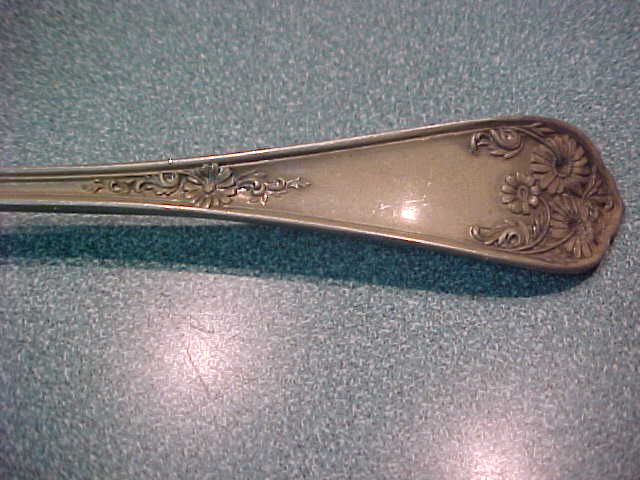 John Imhoff requested to identify the maker and the pattern of his
set of flatware
(July Newsletter).This is the reply of Norma L. Young:
John Imhoff requested to identify the maker and the pattern of his
set of flatware
(July Newsletter).This is the reply of Norma L. Young:
|
John Imhoff 's sterling is Wellesley pattern, by International
Silver Co., USA, produced 1912 and thereafter, discontinued at unknown
date (when sending in photos for identification, on North American
patterns, people should include the entire handle, from where it meets
the back of bowl for example to the tip as this is very helpful to see
how far the pattern extends etc).
Lots of re-sale web sites show odd pieces available in the States.
---
Books
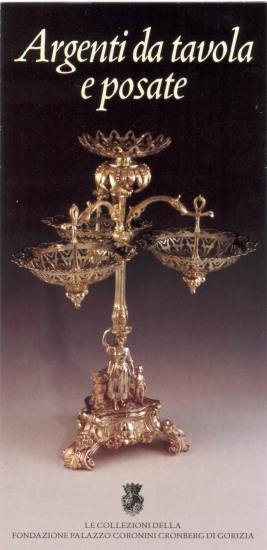
 The Fondazione Palazzo Coronini Cronberg (Coronini Cronberg
Foundation) of Gorizia (Italy) is known by ASCAS members through the
article published by Serenella Ferrari Benedetti on Setpember 2004
Newsletter (
A Napoleonic sugar bowl from an Italian Museum ).
The Fondazione Palazzo Coronini Cronberg (Coronini Cronberg
Foundation) of Gorizia (Italy) is known by ASCAS members through the
article published by Serenella Ferrari Benedetti on Setpember 2004
Newsletter (
A Napoleonic sugar bowl from an Italian Museum ).
The Foundation has a wide collection (over 1300 pieces) of Russian,
English, German, Austrian, Danish, French and, obviously, Italian
silver tableware from 17th to 20th century.
The Foundation has just published the book Argenti da tavola e
posate (Silver tableware and silverware) containing the
complete catalog and a look to the archival documents of this section of its silver
collection.
The book presents 277 inventory sheets, each with a photo and a wide
description of the piece, its marking and provenance. Of great
interest is the section with the photographic representations and
description of the hallmarks (over 400). A photographic gallery with
high quality color images complete the book.
The book is in Italian, but its excellent photographic outfit may be
of general interest.
The cost of the book is 62 Euros and may be requested to:
Fondazione Palazzo Coronini Cronberg
Viale XX Settembre 14 - 34170 Gorizia - Italy
fax (39) 0481/547222 - e-mail address:
fondazionecoronini@libero.it or
serenellaferrari@hotmail.com
 La Fondazione Palazzo Coronini Cronberg è già nota ai soci
dell'ASCAS attraverso l'articolo pubblicato nella Newsletter di
Settembre 2004 dalla Dr.ssa Serenella Ferrari Benedetti (
Una zuccheriera napoleonica da un museo poco conosciuto).
La Fondazione Palazzo Coronini Cronberg è già nota ai soci
dell'ASCAS attraverso l'articolo pubblicato nella Newsletter di
Settembre 2004 dalla Dr.ssa Serenella Ferrari Benedetti (
Una zuccheriera napoleonica da un museo poco conosciuto).
La Fondazione ha una vasta collezione (oltre 1300 pezzi) di
argenteria da tavola Russa, Inglese, Tedesca, Austriaca, Francese e,
ovviamente, Italiana dal XVII al XX secolo.
La fondazione Coronini Cronberg ha appena pubblicato il volume
Argenti da tavola e posate con il catalogo completo di questa parte della sua vasta
collezione di argenti ed una rassegna dei documenti di archivio
inerenti a questa raccolta.
Il libro contiene 277 schede del catalogo degli argenti, ognuna con
la foto ed i dettagli del punzone e della provenienza del pezzo. Di
grande interesse è anche la sezione dedicata alla rappresentazione
fotografica e alla descrizione dei punzoni (oltre 400). Infine, il
libro è completato da una bella rassegna fotografica a colori di
alcuni dei pezzi più significativi.
Il prezzo del libro è di 62 Euro. Può essere ordinato contattando:
Fondazione Palazzo Coronini Cronberg
Viale XX Settembre 14 - 34170 Gorizia
telef.0481/533485 fax 0481/547222
e-mail:
fondazionecoronini@libero.it oppure
serenellaferrari@hotmail.com
Argenti da tavola e posate
a cura di Cristina Bragaglia Venuti, Simonetta Brazza, Serenella
Ferrari Benedetti, Luca Geroni
Edit. Umberto Allemandi & C.
|
Closing our August newsletter I hope you have appreciated its
content.
Your comments, suggestions and advice will be of great help.
My thanks to Giovanni Ciceri, Hymie Dinerstein, Jayne Dye, Serenella
Ferrari Benedetti, Genni Grassi, Lillian Greenberg, Graham Hodges, Rafe
Nottage, Randy Vanhoose, Norma L. Young for their highly valuable
contributions.
Giorgio Busetto
Secretary
|
 newsletter # 16 AUGUST 2005
newsletter # 16 AUGUST 2005 Sam Mitchell's question about the hallmark of his Danish jewel
(July Newsletter) has received this reply by Norma L. Young:
Sam Mitchell's question about the hallmark of his Danish jewel
(July Newsletter) has received this reply by Norma L. Young: John Imhoff requested to identify the maker and the pattern of his
set of flatware
(July Newsletter).This is the reply of Norma L. Young:
John Imhoff requested to identify the maker and the pattern of his
set of flatware
(July Newsletter).This is the reply of Norma L. Young:



